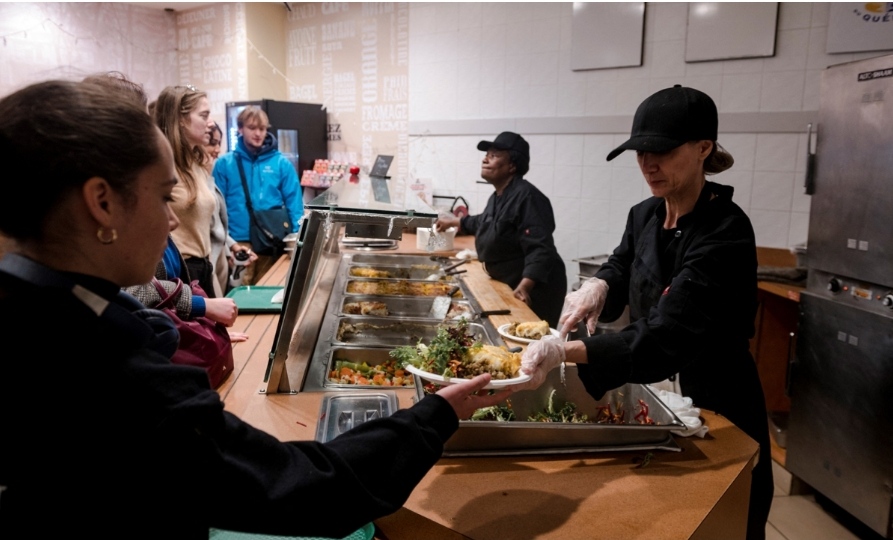Canadian school identifies low-carbon foods for students
Meal and a lesson at university

Polytechnique Montreal students line up at the cafeteria
Trays in hand, Polytechnique Montreal students line up at the cafeteria and through a fogged-up buffet counter glass, check out dishes that now come with information about their carbon footprint.
“I’m surprised to see that a dish with meat is better than a vegetarian dish,” comments Elizabeth Labonte, a chemical engineering student, referring to their environmental impact.
Every Thursday, three hot meal options receive a grade from A to F which corresponds “to a range of equivalent CO2 emissions in kilograms,” explains Patrick Cigana of the school’s Office of Sustainable Development.
Supported by the student body, the project aims to educate and raise awareness, says Cigana.
In order to calculate the carbon footprint of each dish, the engineering school had each recipe analyzed by the on-campus International Reference Center for Life Cycle Analysis and Sustainable Transition (CIRAIG).
A small team of researchers and students were able to calculate the carbon footprint of each ingredient based on previously compiled data bases.
“It really starts from the field, from the moment we cultivate the plant, until the dish is served in the cafeteria,” explains Francois Saunier, deputy general manager of the research center.
Pointing to diagrams on his computer, he specifies that these calculations include all transport but also food waste as well as cooking in the cafeteria.
Often misunderstood, the food system – including production, packaging and distribution – represents the “primary source of greenhouse gas emissions at the global level,” according to Carole-Anne Lapierre, an agriculture and food systems analyst at Equiterre.
Polytechnique’s initiative “gives us immense power as consumers, because we can make different choices,” adds the expert, who nevertheless recognizes the difficulty of completely changing one’s diet and so recommends doing it “in the form of challenges,” step by step.
Although the Quebec university’s pilot project is unique in Canada, similar concepts were developed for menus of certain British restaurants.
But for some, their choices are dictated primarily “by price above all else,” especially during the current period of inflation, says Chelbali Ryad, 24, after a stop at the checkout counter to pay for his meal.
For Cigana, the most important thing is to raise awareness, saying “all that people learn through this program, they can apply it at home too.”




